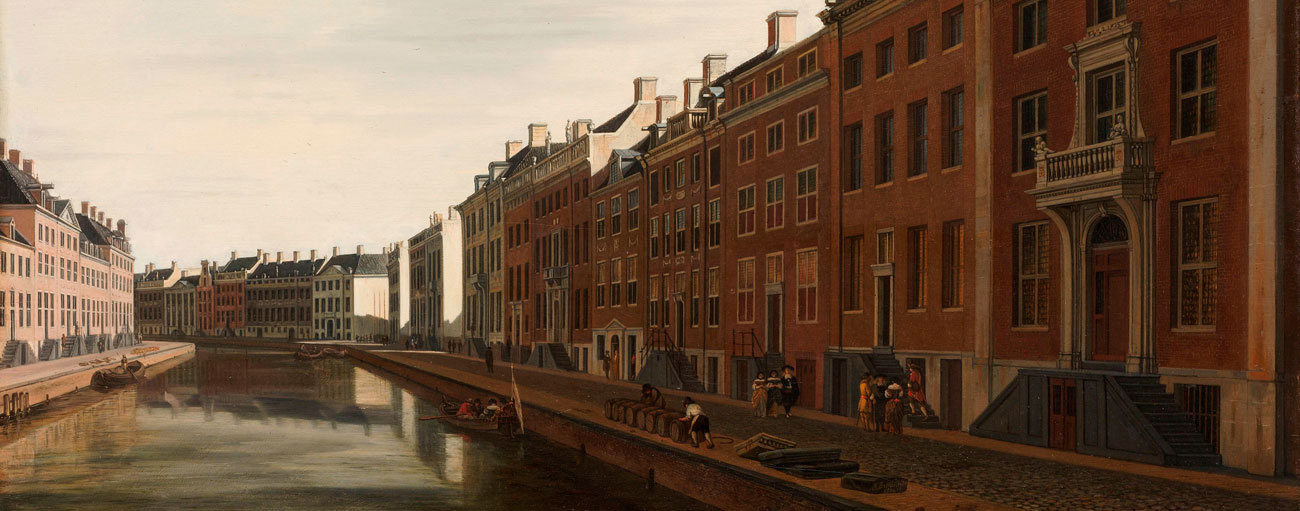No gold on the golden bend
Koen KleijnThe soberness of the façades is often associated with ‘typical Dutch’ or ‘Calvinistic’ morals: those who are well off are reluctant to spend it. Yet the soberness of the façades also has to do with something else.
There are many more ‘double’ canal houses on the Golden Bend, which was realised in 1663, than in the first major expansion of the city. This new part of the canal belt was popular amongst the urban elite almost immediately after construction. While many of the houses were built by the new residents themselves, a large number of lots were bought by people who worked in the construction industry, such as carpenters and bricklayers, who acted as project developers. They established real estate portfolios with homes that were for rent and for sale, often built in series, with prefabricated components. This is why many of the houses look similar.
The soberness of the façades is often associated with ‘typical Dutch’ or ‘Calvinistic’ morals: those who are well off are reluctant to spend it. To the outside world, you must present yourself in a modest and sober manner. Yet the soberness of the façades also has to do with something else. For most building owners, the houses were also considered to be an investment. Even for wealthy 17th century residents, life was full of uncertainties. Few social provisions were available during times of hardship, and you had to rely on your network of family and friends.
"A canal house as an investment for the long term, a presentable home that could last for generations"
That's why a canal house was seen as a valuable asset, as an investment for the long term. It had to be a comfortable and presentable home, that could last for generations to come, but it also had to be marketable and retain value. That led to a ‘neutral’ taste. The decorations on the façades and within the interiors did not contain too many personal touches of the owner’s family.
While the restrained architecture of the Golden Bend is undoubtedly related to Calvinistic modesty, to an aversion to outward displays, perhaps the most important message of all is the practical approach to the value of real estate.
Photo: Gerrit Adriaensz Berckheyde, The ‘Golden Bend’ seen from the west, 1672 (Collection Rijksmuseum Amsterdam)
This story origins in Edition #7 for which art historian Koen Kleijn went in search of ten remarkable city stories viewed from the theme 'The Medium is the Message'.

Koen Kleijn
Koen Kleijn is art historian, journalist, documentary filmmaker and writer. One of his specialties is the history of Amsterdam, on which he wrote several books. Since early 2018, he has been editor-in-chief of the historical monthly Ons Amsterdam. He is also regularly writes reviews for De Groene Amsterdammer, and is curator of Museum Het Grachtenhuis.
